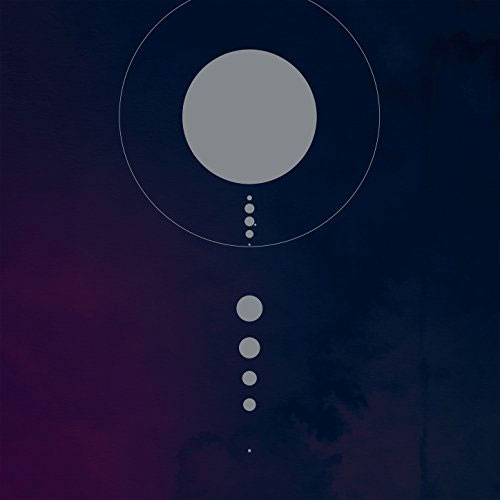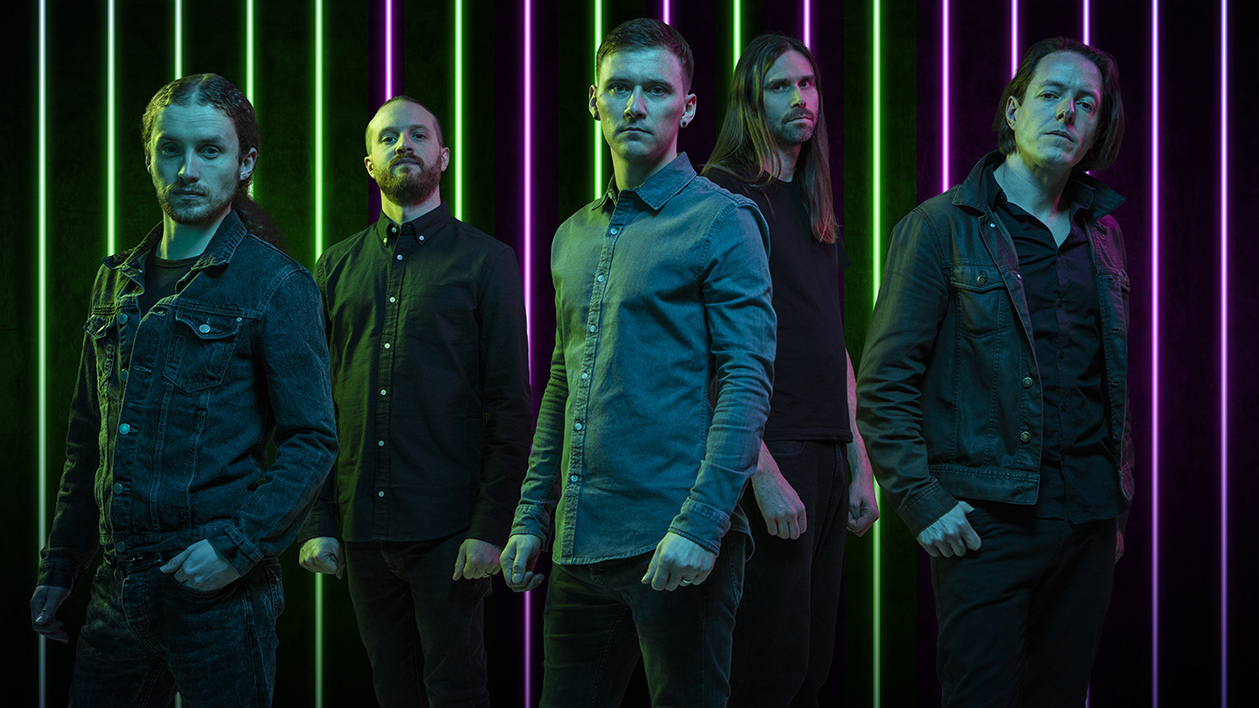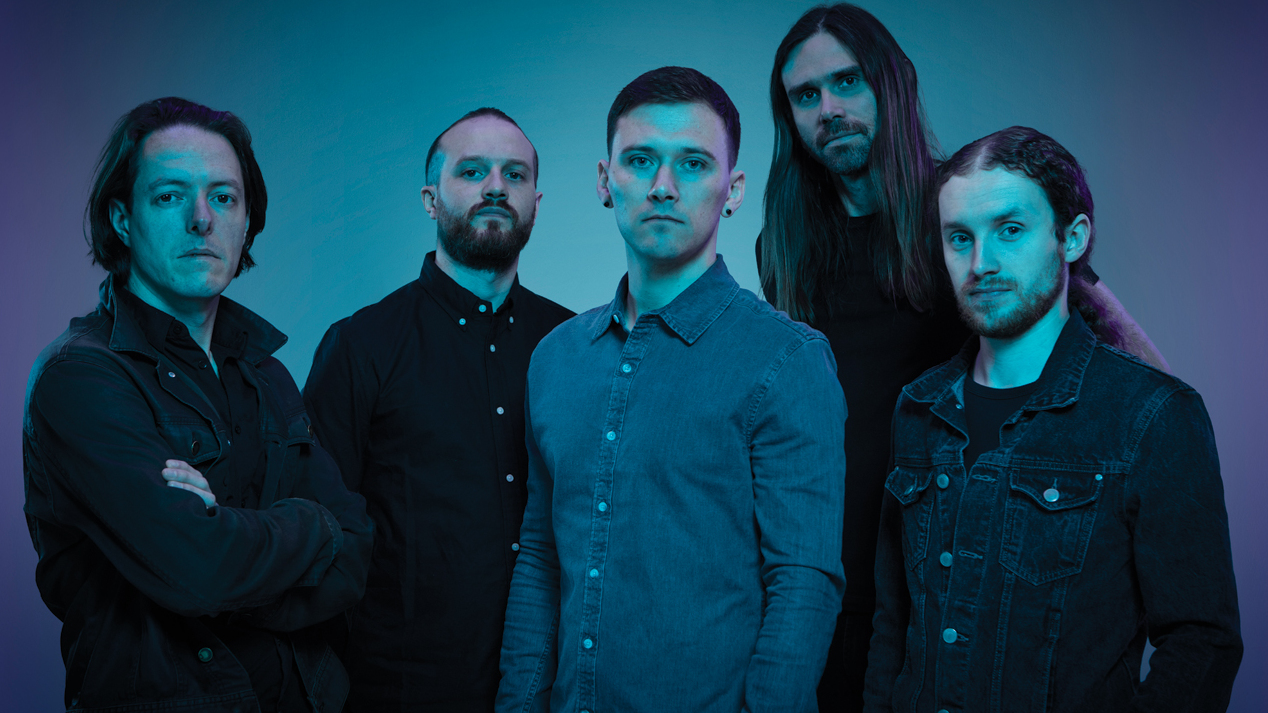"We’ve become more stable, more solid than ever before.” How TesseracT made Sonder
From taking inspiration from visual cues to getting the fans involved, TesseracT reveal all about their 2018 concept album Sonder’s creation

The pivotal moment of TesseracT’s brilliant 2015 live DVD Odyssey/Scala comes about halfway through, when vocalist Dan Tompkins takes a second to address the audience. “From the bottom of my heart, thank you so much for welcoming me back into TesseracT.” Having left the band, Tompkins had returned after an album recorded in his absence, and Tesseract were having to recalibrate and realign.
With Tompkins back in the fold, they returned to the line-up that had recorded their debut album One, for which this magazine awarded them the New Blood award at the 2012 Prog Awards. Described as a “milestone” for the band by Tompkins on that aforementioned DVD, that set and tour drew a line under a complicated period for TesseracT and ushered in both a new sense of purpose and a radical change in their sound.
Shortly after Tompkins’ return, the leaner and punchier studio album Polaris showcased a new side to the band, at the cost of dispensing with some of the more narrative or conceptual features of their earlier records. In hindsight, Polaris is probably seen as a stepping stone, allowing the band to settle back into their identity and begin to chart a course forward.
Their upcoming LP Sonder is unequivocally the most ambitious statement the band have made yet. A sprawling monolith of huge riffs and vast, cinematic spaces, it sounds like the soundtrack to interstellar travel, even though conceptually and lyrically it’s firmly rooted in concerns at the granularity of the individual. It’s also a clear sign that the band are able to unite high-concept prog with easier-to-digest riffs, choruses and lyrics, suggesting that a long bet on TesseracT being a future festival headliner in the metal world isn’t too far-fetched.
Uniting the heady conceptual metal of 2013’s Altered State – their second album, which was recorded with replacement vocalist Ashe O’Hara – with the accessibility and snap of Polaris has resulted in a record that is somehow almost unbelievably massive, and yet clocks in at a mere 37 minutes. It’s just one of many seeming contradictions about Sonder that somehow just work.

"I don’t think it’s a conscious decision but maybe it’s gone back to Altered State in a way – it could have pushed us to write something a bit more proggy, so to speak,” says Acle Kahney, the band’s guitarist and principal songwriter.
It’s to the band’s credit that they’ve been able to pull off something that’s as ambitious as this so soon after finishing a lengthy and exhausting touring cycle.
Sign up below to get the latest from Prog, plus exclusive special offers, direct to your inbox!
“A few things happened on tour, I guess, writing-wise,” guitarist James Monteith explains. “There were lots of sort of demos being emailed around and Aiden [O’Brien], who is our front-of-house man and co-writer, and does some production work here [at Acle’s 4D Sounds studio], he was developing some ideas in his bunk.”
That at least some of the record was written on tour should come as no surprise – TesseracT have been on the road touring Polaris for nearly three years, along the way playing shows with the likes of Gojira, Megadeth and Meshuggah, increasing in swagger and status with every run of dates.
So much of this new-found confidence comes from the fact that the band’s line‑up has now stabilised. When Tompkins originally left after the One album cycle, the band spent several years trying to find a replacement, with mixed success.
Though there are plenty of fans willing to argue the point one way or another online, the simple fact remains that the band have gone from strength to strength since Tompkins rejoined, reaping the reward in terms of an increase in profile and reputation.
Sonder is important in this regard, as it marks the first time that two consecutive Tesseract albums have featured the same vocalist. “In general, since Dan rejoined, I guess we’ve become more stable, more solid than ever before,” says Monteith. “I think we’re feeling really ready to make a go of this album and see where it takes us. I think it’s taken that period of touring together to really get us to feeling as strong as we’re feeling now.”
Like Altered State, Sonder is explicitly a concept album. Not only that, but it’s an album that was engineered from the start as such. “The lyricists in the band have been left to their own devices,” muses Tompkins. “I wanted to take that opportunity to sit down with the guys and say, ‘For once can we all just get behind not just the music, but the concepts and the lyrics.’
“So for every single demo that we had, we began to throw ideas on the table in terms of what we might want to talk about, what kind of images we had in our heads when we listen to the music.”
From this, a theme rapidly emerged. The concept is built around the word ‘sonder’, after which the album takes its name. As Tompkins explains, it’s a neologism coined by the writer and poet John Koenig in his The Dictionary Of Obscure Sorrows.
“We started to develop a really nice concept which we stemmed around the idea of ‘sonder’. When I wrote the lyrics for One, the first album, there was very much a sense of dream-state kind of writing. I’d fall asleep listening to the instrumentals and I’d often get inspired by dream thoughts. A lot of the emotions I was feeling at that time were ineffable. That word has cropped up and been very relatable to me for the past seven years. I’ve not been able to describe certain emotions or express how I'm feeling.
“When I came across the word ‘sonder’, that was the first time somebody had actually stepped outside the box and thought about creating a word for something, an emotion, that was ineffable – ‘Sonder’ being that kind of feeling of walking down a street and you suddenly realise you’re surrounded by people that are living their own lives, their own complex and vivid lives, and you are very separate to that. You only live your one, tunnel-visioned life, and you don’t step back and think, ‘Actually, there’s billions of people living incredibly complex lives just like your own,’ and I’ve always struggled to put that into words.”

How this concept plays out is what ties the music, concepts and artwork together into their grand vision. To support the concept, the band solicited field recordings from their fans, and the audio snippets they received were then worked into tracks or used as sonic building blocks as part of the narrative conversation of the album.
“Basically we did a call‑out to fans to record any samples or sounds or anything, and we got about 80 submissions,” says Monteith. “I think Aiden used about 40 of those to add textures and layers and basically make loads of sounds that you couldn’t have imagined would have existed, and he managed to create them from a lot of sounds he didn’t know existed until he got them.”
When listening to the album, at many points textures and sounds fleetingly appear and evoke the idea of other lives weaved in among the music, yet somehow they’re still never fully clear to the listener. The richness these subtle touches add can’t be underestimated. Even without knowing the provenance of these sounds, the album would still be set apart by their presence.
Though the record as a whole is highly conceptual, the tracks are some of the most immediate, concise and accessible the band have yet penned. Take, for instance, the album opener and lead single proper, Luminary. Not only does the track reach its epic chorus comfortably within a minute, but the song as a whole only just trips over the three-minute mark, a testament to the band not setting any hard and fast rules down about how they wanted ideas to develop.
“Luminary wasn’t meant to be a three-minute song – that’s just how it happened, and it finished at that moment and it didn’t have anywhere else to go,” explains Monteith.
This accessibility is a natural development from the direction the band had been moving in on Polaris, where heavier and screamed vocals made way for more nuanced clean vocals and instrumentals that bring the vocals more to the fore.
When this trend first began on Altered State with stopgap vocalist Ashe O’Hara, the effect was achieved with extensive vocal layering. Tompkins’ approach is very much less-is-more by comparison. Although there’s double tracking, supporting vocal harmonies and the odd scream, there’s never an obfuscation of the core vocal, and the character and power of Tompkins’ singing is really pronounced.
In between the heavier cuts, there’s breathing space in segues like Orbital, allowing the experimental, ambient tendencies in the record to cleanly meet the narrative driven by the lyrics. In terms of the melodies employed, cuts like Juno clearly bear vocal traits that Tompkins has developed on his side projects White Moth Black Butterfly and Zeta, and they’re used to devastating effect.
King, meanwhile, is an example of the more collaborative style of songwriting that’s emerged on Sonder. On previous records, the workflow the band found most productive was Kahney taking charge, with vocals and additional takes being added much later in the process. This wasn’t the case on Sonder, though. Not only was O’Brien involved on a more fundamental level, contributing writing ideas, textures and electronics, but within the band the roles and writing process changed as well.
As Monteith explains, “Aiden was more involved in this record than before, and I think he brought a lot of ideas, a lot of the other sounds on the record. He also did the field recordings, which added a really interesting extra element.”
Monteith’s own role changed slightly too. “King, that started from a riff I was messing with, which was basically the intro riff, and Aiden took it and basically added the mellow section afterward, then the chorus at the end. And Acle took all of that and wrote the bits in between and basically refined everything.”
Kahney adds, “I think King is my favourite track on there, actually. It’s probably had the most input from everyone.”
Monteith picks up, “Again, that’s a song where once the bare bones had been recorded, Dan wrote a melody, which then changed part of the riff in the first section and made this really cool little texture that wouldn’t have existed if he hadn’t written that, so it ended up being a really organic song. Organic for TesseracT, anyway.”
Kahney concludes by musing on a direction that might be open to the band for future releases: “If we’d had more time, that [writing process] would have happened
a bit more. I’m still happy with everything but if we’d had more time, we could have experimented more.”

That’s not the only experimental tack they’ve taken with their writing on Sonder, though. One new thing they’ve tried is writing to visual cues. One of the tracks on the album, Beneath My Skin, originated as a spin-off for a piece of re-soundtracking that Kahney was playing around with, using the film Under The Skin as inspiration.
“I wrote some music to [that],” begins Kahney. “It’s a really weird film. I wrote the kind of intro, the clean ‘ding’ to one of the scenes in the movie, and that kind of started that song off.”
When TesseracT are asked what they love about music, they’re quick to reply. “I think music is not only an incredible thing to enjoy and to take part in,” says Monteith, “but it’s also very therapeutic and it’s something I don’t know how anyone could live without.”
Kahney replies simply, “What he said.”
Tompkins adds: “I love that it can change your attitude, so just in the way that when the brain releases endorphins when you sing, which are your body’s feel-good chemicals, you get the same reaction from music, so it can change the way you feel in an instant. I love the fact that you can turn to music in any situation in life: whether you’re having a great time, whether you’re having a low time, music is there to make things better.”
This article originally appeared in issue 87 of Prog Magazine.
